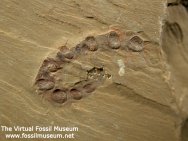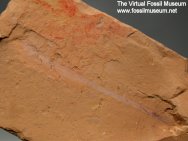Lobopodia Fossils
| ||||||||||||||||||||||||||
References:
- Smith MR, Ortega-Hernández J. Hallucigenia's onychophoran-like claws and the case for Tactopoda. Nature. 2014 Oct 16;514(7522):363-6.
- Whittington, H. B. The lobopod animal Aysheaia pedunculata Walcott, Middle Cambrian, Burgess Shale, British Columbia. Phil. Trans. R. Soc. Lond. B 284, 165–197 (1978).
- Hou, X.-G. & Bergström, J. Cambrian lobopodians–ancestors of extant onychophorans? Zool. J. Linn. Soc. 114, 3–19 (1995)
- Ramsköld, L. & Chen, J.-Y. in Arthropod Fossils and Phylogeny (ed. Edgecombe, G. D.) 107–150 (Columbia Univ. Press, 1998)
- Bergström, J. & Hou, X. Cambrian Onychophora or xenusians. Zool. Anz. 240, 237–245 (2001)
- Budd, G. E. Tardigrades as ‘stem-group arthropods’: the evidence from the Cambrian fauna. Zool. Anz. 240, 265–279 (2001)
- Wills, M. A., Briggs, D. E. G., Fortey, R. A., Wilkinson, M. & Sneath, P. H. A. in Arthropod Fossils and Phylogeny (ed. Edgecombe, G. D.) 33–105 (Columbia Univ. Press, 1998)
- Campbell, L. I. et al. MicroRNAs and phylogenomics resolve the relationships of Tardigrada and suggest that velvet worms are the sister group of Arthropoda. Proc. Natl Acad. Sci. USA 108, 15920–15924 (2011)
Fossil
Museum Navigation:
Home Geological Time Paleobiology Geological History Tree of Life Fossil Sites Fossils Evolution Fossil Record Museum Fossils |







